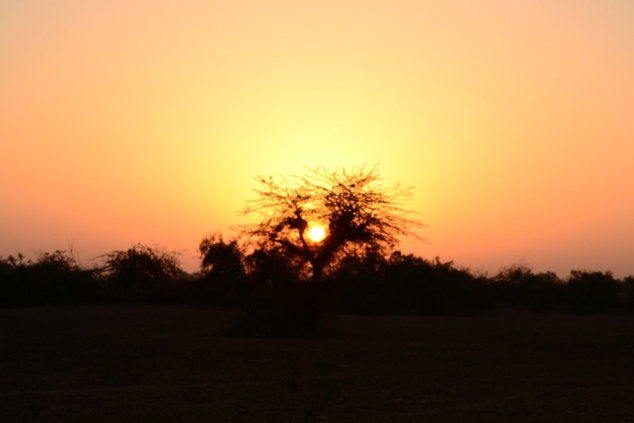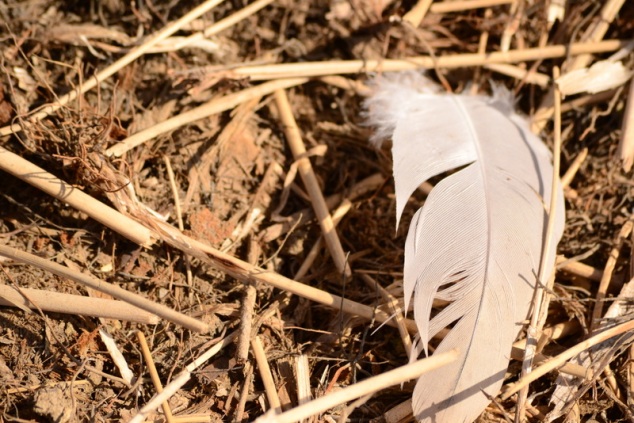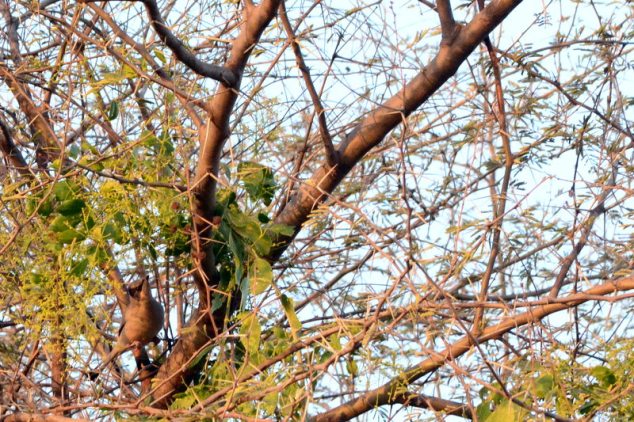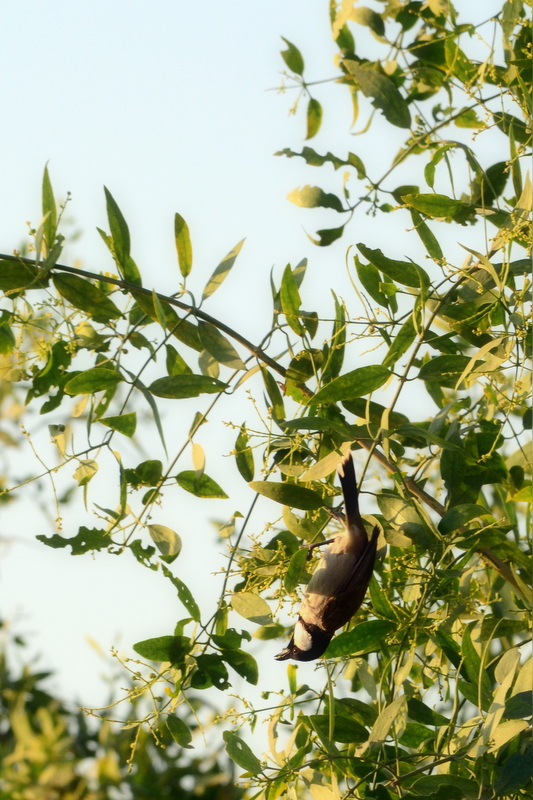February 4, 2015
 We left before daybreak. Last evening we witnessed the moon take over the heavens as the sun went home to rest. This morning we watched as the moon retired and the sun stretched and yawned and patted all creation on its head.
We left before daybreak. Last evening we witnessed the moon take over the heavens as the sun went home to rest. This morning we watched as the moon retired and the sun stretched and yawned and patted all creation on its head.
As a part of their efforts to involve local communities in conservation, CEDO asks their guests to employ a local guide to help them sight a grey hypocolius. This monotypic bird is a regular wintering species, usually found in the *tooth brush tree forest close to the Jat settlement of Fulay village. What is it that makes these uniformly grey birds with white-tipped black primary wing feathers and a black tip to the tail so special? They are not endangered or even particularly rare.
- This bird is the sole member of the genus Hypocolius and family Hypocoliidae
- They are found only the Middle East, breeding in the Iraq, Iran, Pakistan, Turkmenistan area, and wintering mostly near the Red Sea and Persian Gulf coasts of Arabia. The political difficulties in getting in and around any of these countries, makes sighting by foreigners a rarity.
India the best place to spot this unique species, making Fulay, the only place in India where this bird is regularly seen famous among birders . We were lucky; we saw more than one of them. At day break, the silence of night was broken by stray tweets, and then all of a sudden the air was filled with the chitter chatter of birds gossiping as they went about making a breakfast of berries. As the sun steadily made its way up, our avian fakirs retreated into the shrubbery and the chirping became more subdued till the day relapsed into silence.
We drove on to have our breakfast with the red tailed wheatear at Chhari Dhaand. After we had had our fill of chai and sandwiches, Vaibhavji decided it was time to see if we could sight a flock of cranes. As we drove through the parched grasslands we saw a mirage shimmering on the horizon. The best way to observe the crane is from the interiors of a sturdy vehicle. Since our vehicle was not an all terrain, we parked at a distance and tried to approach to birds by foot. Just as we felt we were getting closer, the birds would feel the same and fly off. We didn’t get close enough to make great pictures, however we did get a good view. We got a chance to see them from closer later as we drove towards the watchtower.

At one point, we crossed an a small area littered with crane feathers. Vaibhavji supposed, an Eagle had made a meal of a crane
By now the sun was glaring fiercely and threatening to strike anyone who didn’t hide, with its thick golden staff. We returned at lunch hour to feast on a light home cooked vegetarian meal. I can’t tell you how delighted I was at every meal at CEDO. Once again I could eat without having to double check and then check again if the food was vegetarian.
P.S – An audio (video) of the early morning twitter is up on our Instagram page. More pictures will be up on our FB page soon.



Hi Vidya…
Mustafa here…
Enjoyed reading your posts….
Hope you remember me
Regards!
LikeLike
Hi Mustafa!
How are you? I’m so glad to hear that you read and enjoy my posts.It feels so wonderful when someone says they like your work, more so when it is someone you know. Please keep reading and telling me what you think.
🙂
LikeLike